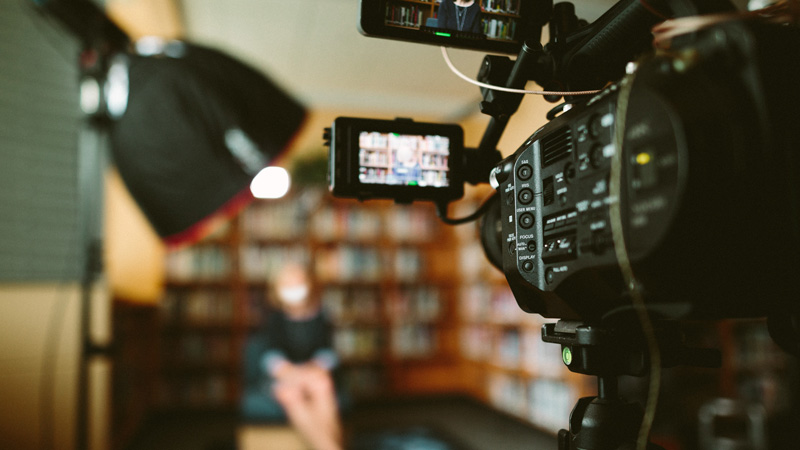The Autocue Conundrum: Does It Always Make Things Better?
The Autocue Conundrum:
Does it Always Make Things Better?
Most people have at least heard of the autocue (also known as the teleprompter), but just in case it has passed you by, the autocue is a piece of filmmaking equipment which displays a script in a large, easy-to-read font, which slowly scrolls down a screen.
This is placed around the lens of the camera which allows the presenter to read the script and seamlessly relay it to the audience without the use of memorisation.
With that in mind, you can then see how it quickly became the workhorse of the newsroom, panel shows and basically all of live television.
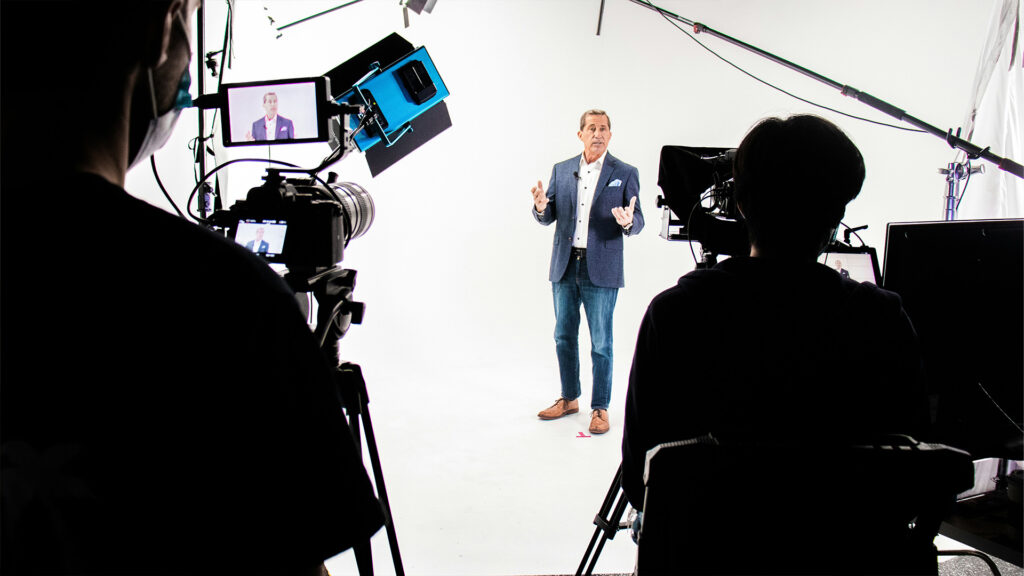
This is why most people have the image in their head that the autocue is the answer to all of their problems.
Haven’t been in front of a camera before?
An autocue will make you seem professional!
Nervous about memorising your lines?
Don’t learn them, just use an autocue!
While the autocue undoubtedly offers advantages in terms of efficiency and precision, it is an art form that needs to be practiced, and counterintuitively in some cases it can detract from the overall production, rather than enhancing it.
So, what are those cases? Well before we go into that, let’s first talk about the pros of using an autocue.
1. Efficiency and Accuracy:
Actors and presenters can effortlessly read scripts while maintaining eye contact with the camera, minimising the chances of mistakes and retakes. This efficiency can greatly reduce production time and costs, especially good for filming people with only a small opening in their schedule.
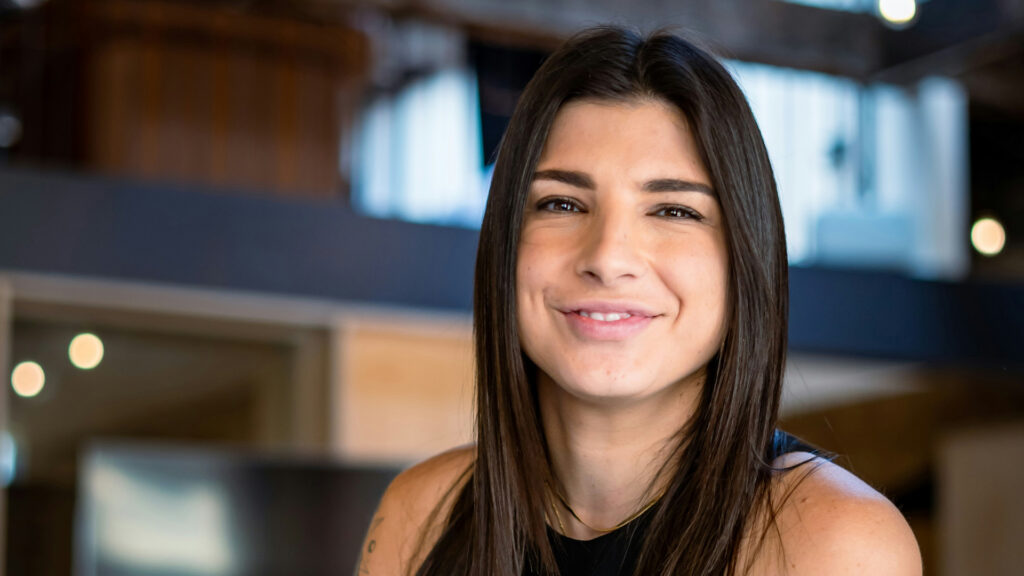
2. Professional Presentation:
The use of an autocue can give a polished and professional look to a production, by allowing the opportunity for a more consistent and controlled delivery, and is great for when precise wording is required, common for videos relating to medical matters and other serious topics.
3. Accessibility:
Even professionals can struggle to memorise lines, which may lead to them not being selected for specific projects – the autocue allows these types of people the chance to present/act.
Now, onto the negatives!
1. Added Complexity:
The use of an autocue adds a layer of complexity to a production – they require careful set-up and calibration, including proper positioning, font size, scrolling speed and lighting adjustments which can be a time-consuming set-up.

They also require an additional person on set to operate the text scroll while filming is taking place.
2. Delivery:
Even though the autocue is seen as a safety net, it can actually detract from the presenter’s performance and confidence, especially for novices.
The reason for this is simple – if an autocue is being used, people are generally less likely to familarise themselves with what they are presenting.
If there is no ‘safety net’ people are more likely to practice and get comfortable with the material (we also suggest people using an autocue do this as well), and this really comes across on camera.
3. Loss of Authenticity
Reading from a script can make actors and presenters appear detached or insincere, lacking the emotion and spontaneity that comes with really knowing what they are presenting.
In other words, it has the potential to make people seem wooden, or robotic, and people will notice, causing them to struggle to connect or trust what they are watching.

So when should the autocue be used?
As discussed in this article, the autocue isn’t ideal for all situations and definitely should not be seen as an alternative to a presenter learning their material.
It is ideal when precise wording is required and the production allows for it with regards to time and budget, but by using it you may end up sacrificing connection with the audience and even confidence in the material, if the presenter is a novice.
Whether using the autocue or not, for the best delivery we always recommend learning your material – memorise it and practice it out loud.
We have written an entire post on what to expect when you are being interviewed by us, which goes over points such as what happens if you make a mistake, how do you prepare, tips for delivery, etc. which you can read by clicking HERE!
And that’s it!
If you wanted to have a chat about anything in this blog or any other elements of video production, contact us today. We love chatting through ideas and we also will happily provide you with free, no obligation quotes.
If you would like to get in touch, send us an email at info@croft-tv.com, use our contact form here or give us a call on 01628668735 and if you found this post useful then please share it!
– The Croft TV Team
Video Terminology Explained Part 1
Video Terminology Explained Part 1
There is a lot of jargon that goes along with the video production process and while it isn’t vital for you to know it – you hire us for our skills and experience after all – we do think that the more information everyone has about the video making process, the better the final video can become.
With that said, over a number of blog posts we’ll be breaking down and explaining common video terms.
In this post we will be looking at the following:
Feel free to click one of the links above to jump straight to a section, or simply read on!

B-roll is the video footage that supports the main shots (or A-roll) and helps flesh out an edit.
For example, in a recent project we filmed an interview style video, where a doctor was explaining the benefits of a breakthrough medical procedure.
After we filmed the interview, we went and filmed the procedure, so in the edit we could cut the footage in when the doctor mentions it.
In this example, the interview itself is the A-roll and the footage of the medical procedure is the B-roll.
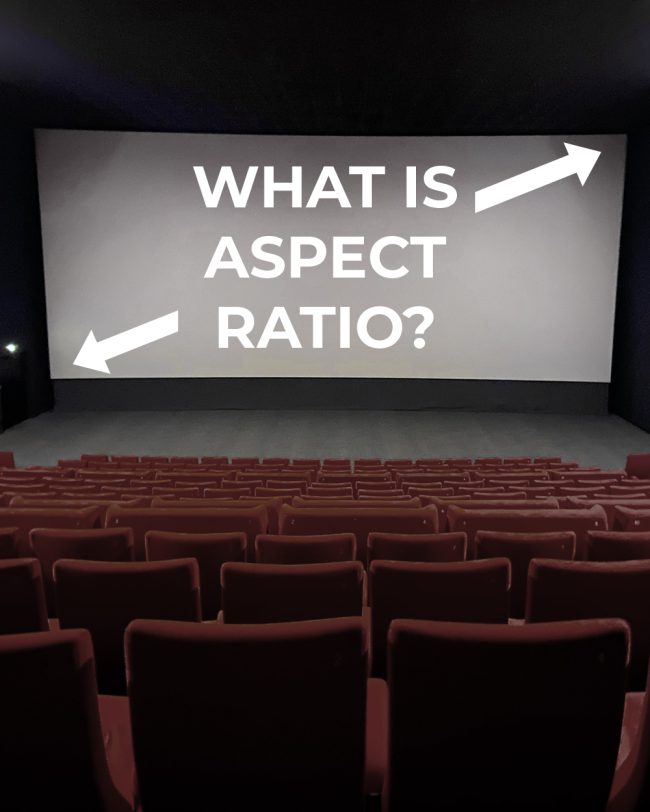
Aspect ratio simply means the ratio of the width to the height of an image or screen.
The most common aspect ratio is 16:9 and is the ratio that most TV and corporate video productions use – 16:9 being 16 units wide by 9 units high, this gives the video a horizontal, or landscape orientation.
In a real-world example, a 16:9 HD video is 1920px by 1080px:
1080/9 = 120
1920/16 = 120
Cinema is slightly different, the most common aspect ratios being 1.85:1 and 2.39:1, these are extremely wide.
One other set of aspect ratios you might come across are vertical, or portrait aspect ratios, these are commonly used for content viewed on a mobile phone.
Common portrait aspect ratios are 9:16 (as if the 16:9 screen was flipped 90 degrees) or 5:4.

The rule of thirds isn’t so much a rule as it is a guideline, and if followed will usually achieve a nicely composed shot.
The idea is that the screen is divided into thirds, vertically and horizontally, by solid lines. Aligning important objects in frame to these lines and where they intersect, will usually give an aesthetically pleasing shot.
It is a very simple idea, but it works! Try picturing this grid when you sit down to watch your next film and you’ll see what we mean.

White balancing a camera is the process of telling the camera what the true colour of white is; from this all other colours are measured.
This ensures that colours look as natural as possible, rather than being too blue or too yellow for example.
White balance can be automatically determined by the camera, chosen from a list of presets, or manually set, and is something we do at the start of every shoot (you might have missed us doing this as we’ve usually completed the white balance before our client or filming stars even enter the room!), or if we move location.

Generally, golden hour is the time just after sunrise or just before sunset when the sun is low on the horizon.
The use of ‘hour’ in the name is not literal, the time the sun takes to rise or fall depends on a number of factors including where you are in the world and the season, just to name a few.
The benefits of shooting during golden hour are:
The colour temperature
Golden hour produces colour temperatures in the ‘warmer’ side of the colour spectrum, they are incredible shades of yellows, oranges and reds that you won’t see at any other time of day and won’t be able to reproduce with any post processing technique.
Long shadows
The low sun produces a long shadow that can help add drama and interest to the shot.
The diffusion of light
During the day the sun sits high in the sky, this kind of ‘hard’, direct sunlight creates high contrast.
In contrast (see what I did there?) the light produced during golden hour is ‘soft’ due to light diffusion, and a ‘softer’ light source reduces the contrast in the scene, making the transition from the brightest points in the shot to the darkest more gradual and visually pleasing.
‘Soft’ light also has the tendency to wrap subjects and create soft edges.
For all these reasons, golden hour is an extremely popular time to shoot video.

You’ve definitely heard it before, but you may not have known what it meant – ‘that’s a wrap!’ is a term to signify that filming is over.
It is mostly used to indicate the end of filming on an entire project, but it can also be used to mean that a specific actor has finished their filming.
The term has been used since the early days of the film industry, so if you are on one of our sets and we are finishing up, feel free to yell it out!
And that’s it!
If you wanted to have a chat about anything in this blog or any other elements of video production, contact us today. We love chatting through ideas and we also will happily provide you with free, no obligation quotes.
If you would like to get in touch, send us an email at info@croft-tv.com, use our contact form here or give us a call on 01628668735 and if you found this post useful then please share it!
We’ll see you in Video Terminology Explained Part 2 – coming soon!
– The Croft TV Team
Top 5 Video Trends for 2024
Top 5 Video Trends
for 2024
2024 is just around the corner and a perfect time to take stock of the past year and look ahead at the year to come.
Video has stayed the powerhouse of marketing campaigns for businesses all over the world and only continues to grow. Though, like most things, aspects of video are continuously changing.
Stay ahead of the curve with our top 5 predictions for the upcoming years’ video trends based on our 30+ years of experience in the industry.
Let’s start with the trend that’s on everyone’s mind…
1. Artificial Intelligence (AI)
Artificial Intelligence has been in development for years, but it really has made its way into the public consciousness now (metaphorically, not literally of course).
It’s becoming hard to think of an aspect of video that has not been touched by AI.
It’s in cameras, helping with features such as auto-exposure and auto-focus, it’s in editing software, helping speed up workflows by auto-selecting sound effects and auto-colour-grading. We are even beginning to see it create entire videos solely from text prompts.
This is not an exhaustive list, but believe us when we say, it is beginning to be used a lot!
This is not going to slow down anytime soon either, as the technology gets better, so will its uses.
We are not scared of AI though (yet!) and just see it as another tool to make your videos better, and do things that wouldn’t have been possible even 2 years ago.

2. Social Media Optimised Video Content
Social media has been on the rise for a long time now, platforms come and go, but social media in general continues to go from strength to strength.
Social media marketing is the cornerstone of most companies marketing campaigns these days and is the place you go if you want the biggest audience to see what you are offering.
This is why it is extremely important that the content you put up has been thoroughly thought through, and is specifically optimised for the platform it will be posted on.
For example, if you are on a platform that people scroll through on their phones (such as Instagram), you want to take up as much screen ‘real estate’ as possible. To do that you need to make sure your video is the correct aspect ratio. For Instagram that is 1080px by 1920px (imagine your TV flipped vertically).
Another example is the fact that phone based social media users often watch videos without sound, as they might be on the bus, in the library or… you know… the toilet. By adding subtitles to your video, it doesn’t matter if people watch it with sound or not, not to mention this has accessibility benefits.
Basically, all we are saying is this, you’ve gone to the trouble to have a video made, make sure you get the most out of it by creating many different versions, all specifically optimised for the platform they will end up on.

3.Virtual Reality (VR) and Augmented Reality (AR)
You probably know what these are already, but just in case you don’t, VR or Virtual Reality, is technology that puts a user inside a virtual world, and AR or Augmented Reality, is technology that adds virtual aspects to enhance the real world.
These have been leveraged by companies for years now, but similar to AI, the technology is getting better at a rate of knots, and so are its use cases.
So, we will be seeing more and more companies use these immersive experiences to provide training, allow customers to virtually try on new clothes, test a new hair style, see how a new piece of furniture could look in their house, create virtual showrooms, virtual art galleries, you name it and it is happening!
The fact that end users interact with this type of video is its biggest strength and provides excellent conversion rates and low cost alternatives for big areas such as education and sales.
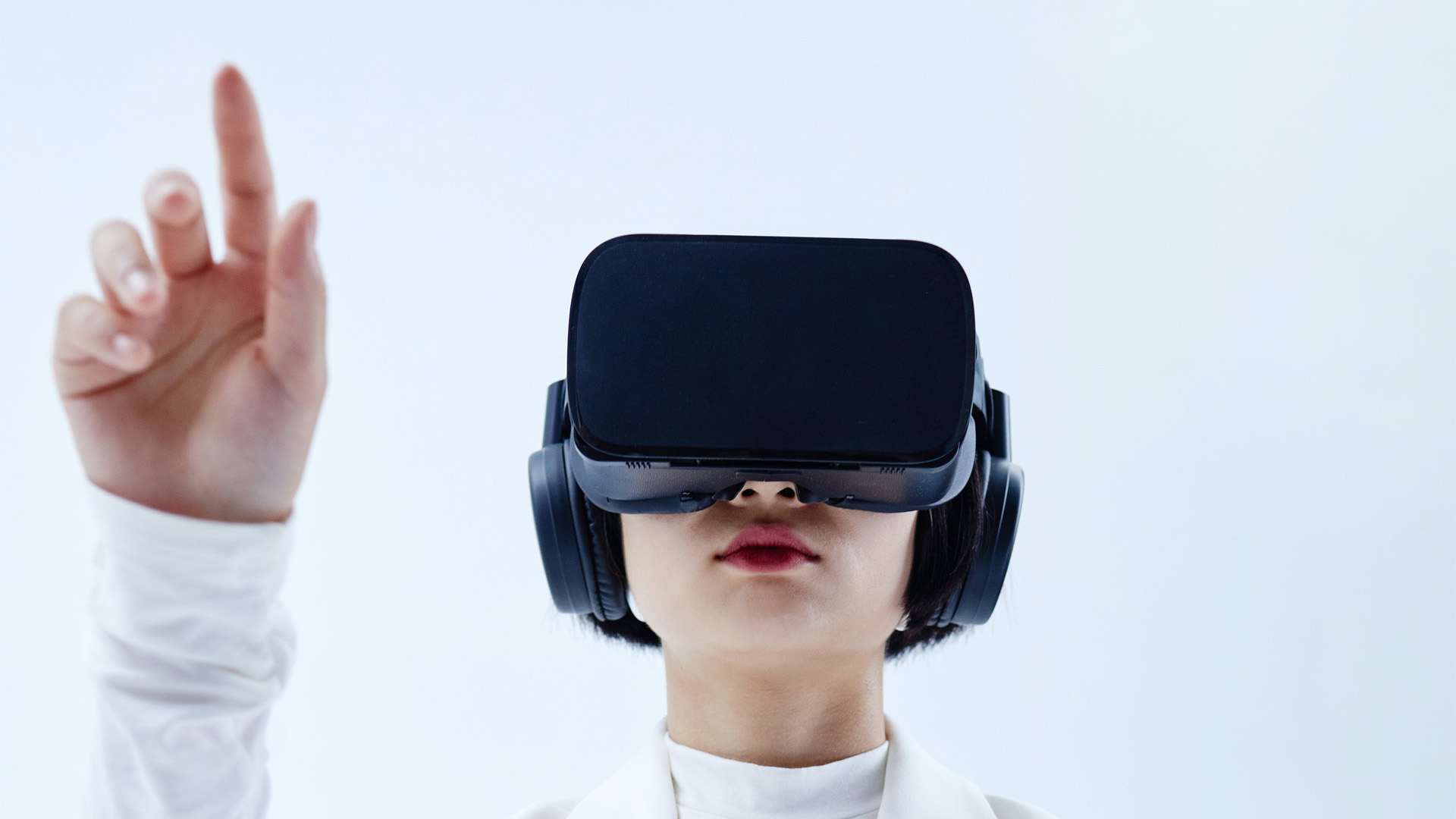
4. Authentic And Inclusive Visuals
This can be a point of contention with a lot of people when done wrong, but when done correctly is exactly what people want to see!
So, what do we mean by correctly?
Authentic and inclusive visuals are a must and allow viewers to see and relate to people similar to themselves in a video – this can only be a good thing!
But, the audience is also intelligent, and can tell when something is not 100% genuine or tokenistic and a lot of companies have fallen into this trap in the past.
So, authentic and inclusive visuals does what it says on the tin, it is about having the inclusivity in videos we all want, in an authentic way.
We film a lot of ‘real world’ videos inside corporate companies and because of this we can only film the people that are there, and if you fake inclusivity people will know straight away.
This means it is up to the company to make sure that they are hiring an inclusive and diverse workforce – not as a checkbox exercise either, but because it has scientifically proven benefits.
We have a lot of great clients that are doing this and believe us, it pays off in many ways!
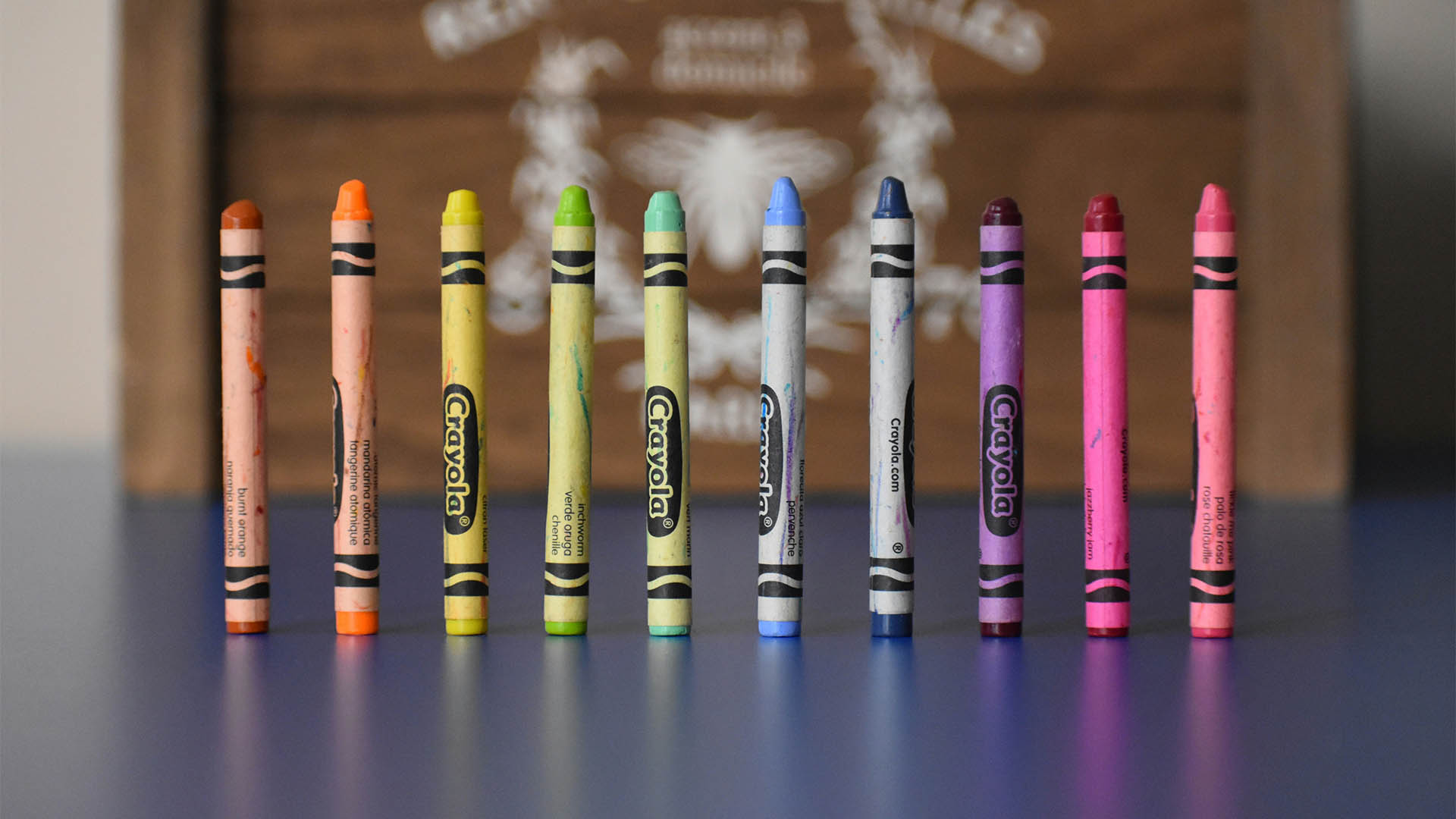
5. Self-Shot Video
This has been in our list before and it is not going away anytime soon!
Self-shooting your own video has stuck around and is increasingly popular for a number of our clients.
Actually, a good percentage of our projects are taking our clients’ self-shot video and tweaking, editing and mastering them, into a professional video.
If you’d like a little bit of help shooting your own video, we’ve created a free, easy to follow guide that will walk you through everything you need to know in getting your videos looking and sounding their best. You can find it by clicking HERE; or download a PDF version by clicking the link below!
Once you’ve shot it, send it to us and let us do our magic. This could take the form of professional editing, cleaning up your audio, grading, adding music, slides, captions & graphics, animations and much more.
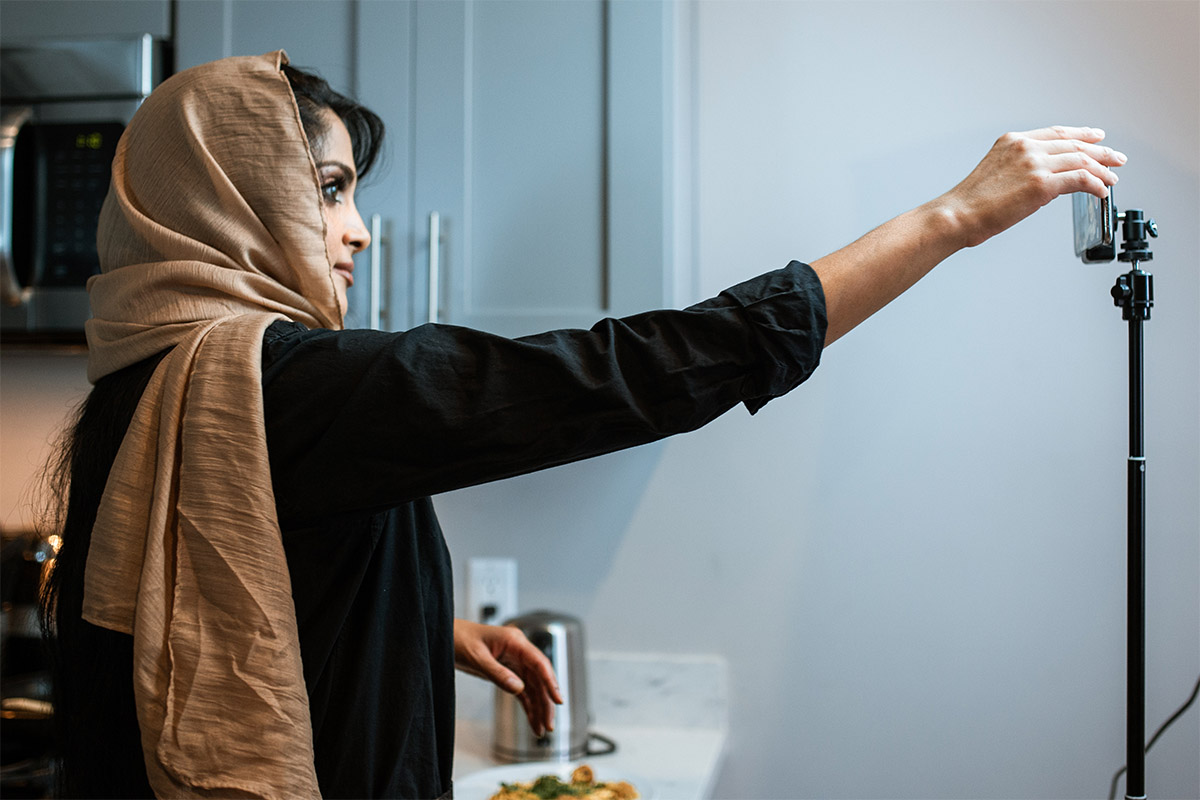
And that’s it!
If you wanted to have a chat about anything in this blog or any other elements of video production, contact us today. We love chatting through ideas and we also will happily provide you with free, no obligation quotes.
If you would like to get in touch, send us an email at info@croft-tv.com, use our contact form here or give us a call on 01628668735 and if you found this post useful then please share it!
– The Croft TV Team
Why We Prefer Shooting In Summer And Why You Should Too!
Why We Prefer Shooting In Summer
And Why You Should Too!
With our over 30 years of experience, you better believe we’ve shot in about every weather condition you can imagine, and while every season has its own beauty, it also has its own set of unique challenges.
That’s why when we are asked which is the best season to film in, more than likely the answer we give is going to be summer.
But why? Is it because the hot, sunny days allow us to top up our tan while we work?
…maybe a little 🙂
But seriously, there are a number of reasons why summer is the best season to shoot your corporate video, so sit back, relax, and let’s find out what they are!
Don’t get us wrong, we are not saying we don’t like the other seasons, we just think these are important points to keep in mind.
A little caveat before we begin, the reasons outlined in this article only apply if an exterior shot is required, if we are utilising the sunlight or if a window will be in shot. If we are shooting in a closed off room, blinds drawn, it could be any season outside and you’d never know!
Summer Has Longer Daylight Hours
You cannot underestimate how valuable it is to have more shooting hours in a day.
In the summer daylight can last over a whopping 16 hours and in winter a measly 6 hours, with winter sunsets happening around 4pm.
I’m not saying we need 16 hours to film your video, but in practical terms it gives so much more flexibility in shooting your video and means we can fit a lot more in.

The Exterior Shots Look Great
In summer, flowers are in bloom, trees are full and the sky is a beautiful blue, as opposed to winter which is… well, you know.
We can obviously dress interiors to look however we like, but as soon as you look out a window at a wintery, grey sky and bare trees, you know exactly what season the video was shot in, and this might not always give the feeling you are after.
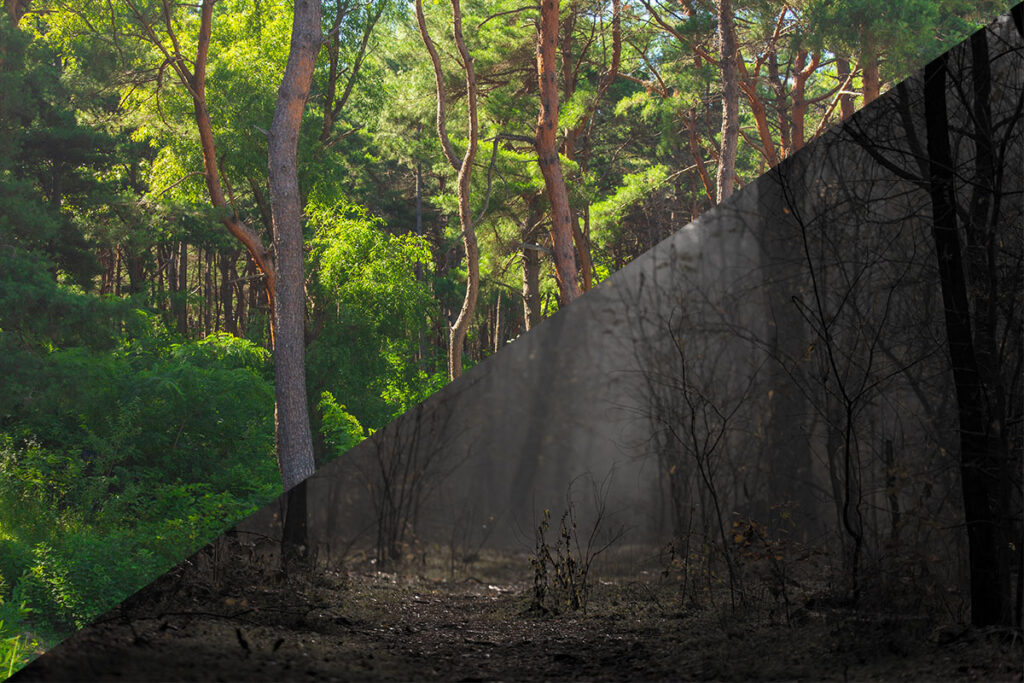
Better Quality Of Light
Due to the angle of the sun’s rays affecting the amount of light that hits the Earth’s surface, the light in summer is a higher quality than in winter. In basic terms it simply looks nicer.
Summer sun also has the habit of wrapping around subjects, which when utilised correctly looks amazing.
Finally, if you are after shadows, nothing beats the long, dramatic shadows you get in a summer’s evening.
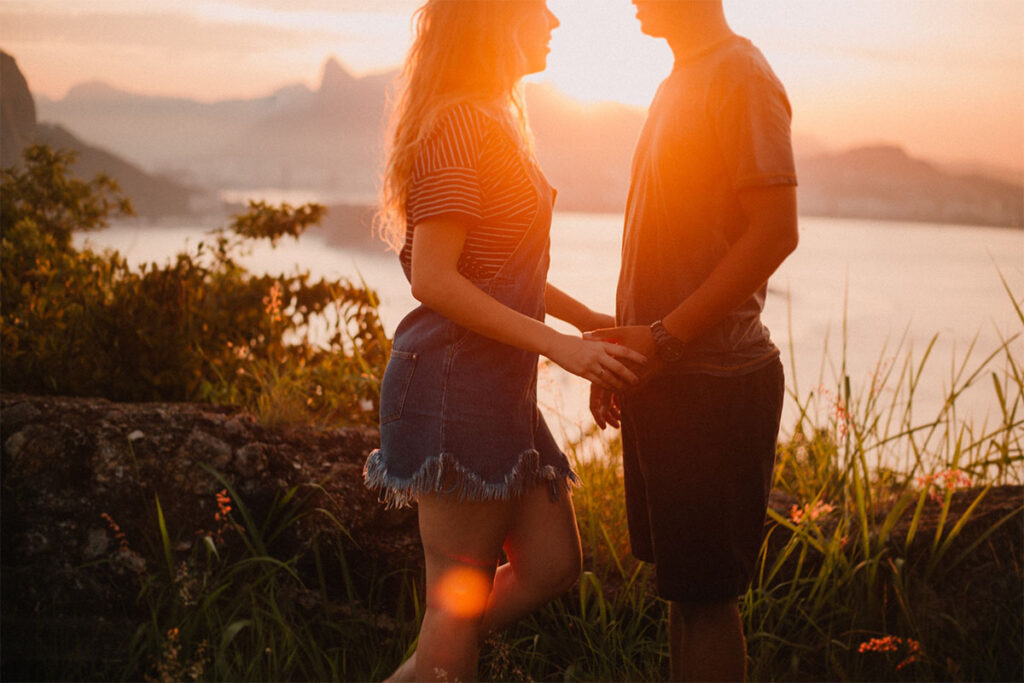
Less Sickness
This one speaks for itself, but in the summer there is a lot less sickness going round, which means it is far more likely that people will be more available to be in your video and that your video star or stars will be well for the shoot.
Though, keep in mind summer does mean school holidays so you may need to plan around parents and teachers!
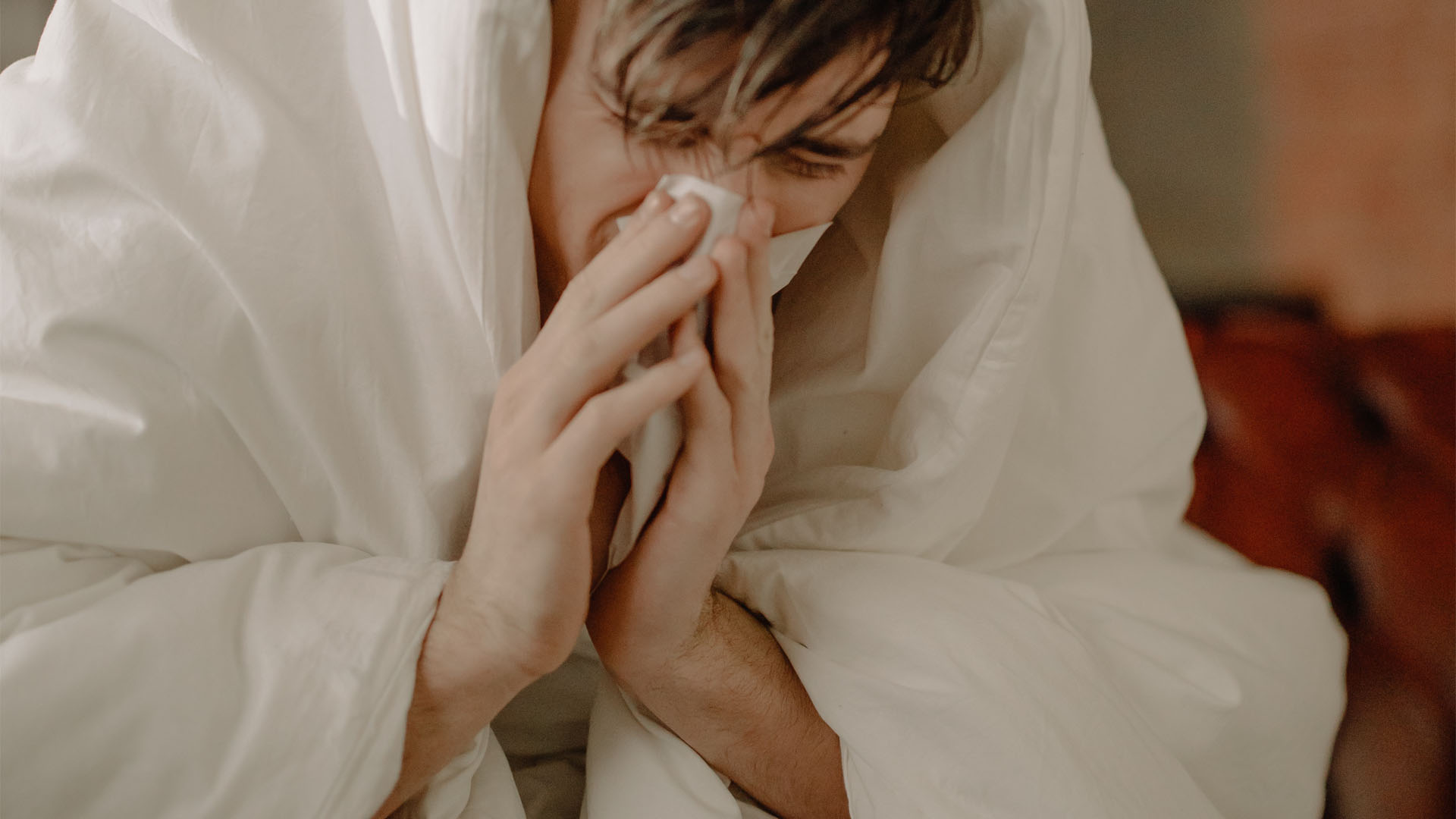
That’s it, thanks for reading!
If you would like to get in touch to discuss your next project, send us an email at info@croft-tv.com, use our contact form here or give us a call on 01628 668735.
We offer no-obligation, free quotes and are always happy to discuss concepts, and if you found this guide useful please share it!
We looking forward to working with you soon!
– The Croft TV Team
Don’t be afraid of the lens: What to expect when you are being interviewed
Don’t be afraid of the lens:
What to expect when you are being interviewed
Whether you have done it many times before or never in your life, being filmed can always be a daunting prospect.
At Croft TV, we don’t think it has to be and make it our business to make you as comfortable as possible.
Being relaxed will not only make the experience enjoyable for you, it will also make for a better final video and with our 30 plus years of experience, we’ve got it down to a fine art!
The purpose of this guide is to break down what to expect when you are being filmed, from what we do before you arrive, to when you are in the room – in an attempt to make you as familiar with the process as possible.
We will also mention a few tips and tricks that you can do to make the process even easier.
Don’t have time to read the whole guide right now? That’s no problem, just click the download link and you can read it at a time that is convenient for you.
Now, let’s dive in!
Before The Shoot
As soon as we know we will be filming, we will have begun planning the shoot, getting the gear ready and thinking about the location, look of the video, etc..
At this point if you have been asked to be in the video, the best thing that you can do is take some time to write out what you want to say and become familiar with it.

We know everyone is extremely busy but if you do have the opportunity to do this, it will make the shoot run more smoothly and save you time on the day!
Treat this like you would if you were presenting in front of people, learn your lines, but don’t just read them in your head, say them out loud, even practice in front of an audience if possible.
Also, if you have been given a set time limit, this would be a good point to time what you are going to say.
The Shoot (Before You Arrive)
To ensure we run to schedule and we use as little of your time as possible, we arrive early (we usually like to get to the location an hour before) to get everything prepared.
We begin by sorting the location, which may have been predetermined, but sometimes not. Ideally the location will visually fit the context of the video and be quiet, commonly an empty office.
Sorting the location will often mean moving objects to make a ‘set’ or clearing things out of the way, but don’t worry, we will always leave a location just as we found it!
Once that is done we begin to set-up the equipment.
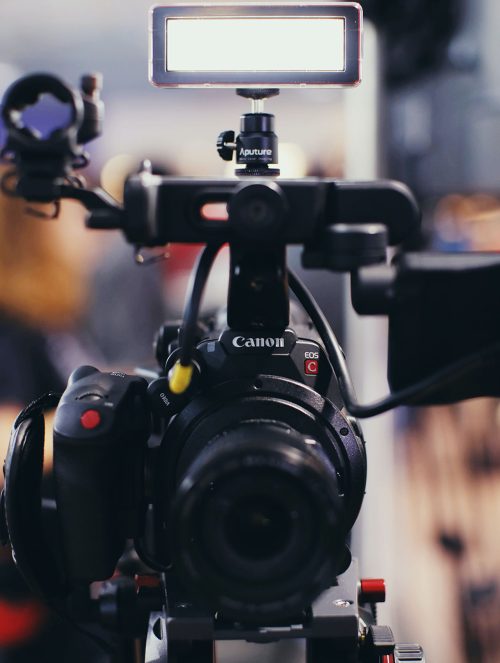
The camera and tripod go up, facing where you (the presenter) will be and a ‘boom’ microphone is set-up to capture your audio.
Lights are assembled around this area and at this point any room lights are turned off and blinds drawn (if possible).
Now, finer tweaks are done.
One of our crew members will stand (or sit) where you will be, while the camera operator tweaks the lighting, exposure settings, sets the white balance and shoots the colour calibrator (these factors ensure the colours the camera is capturing are the same as they look to the naked eye), and finally, an audio test will take place.

Now we are ready for you!
The Shoot (With You!)
Upon entering, you’ll be greeted by us, after which we will direct you to your position and mic you up.
This is nothing to worry about and basically involves having a tiny microphone clipped to your collar, tie, shirt or dress and then hiding the wire.
Next, a quick audio check will take place, where we will ask you a few questions so we can check your audio levels are okay.
Lastly, we’ll give you some direction and a few tips on how to get the best out of your delivery. We’ll discuss them now.
The Look
Depending on the shoot, we will either have you delivering your lines straight down the lens or off to one side of the camera, which will have been decided before the shoot.
In the latter option, one of us will sit behind the camera so your eye-line looks natural.
Most people prefer delivering this way, compared to straight down the lens, as it feels more like a conversation.
An example of what that looks like on camera can be seen below.
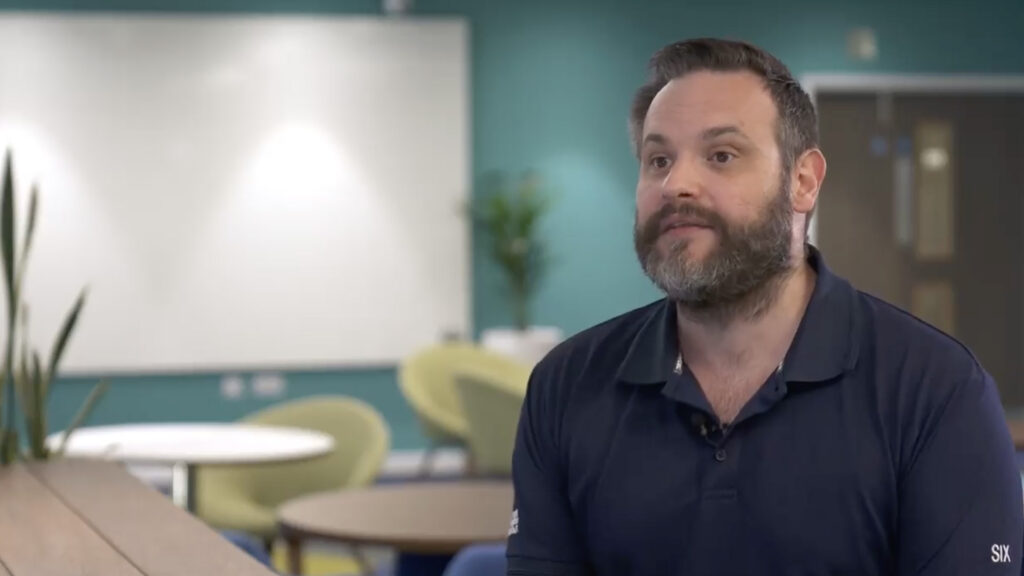
Rephrasing The Question As Part Of Your Answer
In either delivery option, if the shoot requires you to answer questions, we will happily prompt you with them.
Most of the time the questions won’t appear on screen in the final video, so in that case we will ask you to rephrase the question as part of your answer (which is easier than it sounds). For example:
Please tell us who you are, who you work for and your job role?
When answered becomes:
Hello, my name is (insert name) and I am a (insert job role) at (insert place of employment).
You see, simple!
Eye Contact
Whether you are looking at the camera or one of our crew, try not to let your eyes wander.
If they naturally move around as you think, that is fine but always bring them back to the original point of focus, just as you would if you were really having a conversation.

Delivery & General Tips
It’s best to leave a small gap before you begin to speak and after you have finished speaking. When ‘action’ is called, look where you’ve been told to focus on, wait a second or two, then begin. Likewise, when you have finished what you were saying, keep staring where you need to stare for a couple of extra seconds. Doing this will make the editing more seamless, which will improve the overall video.
When some people get flustered, they tend to speed up their talking speed. If this happens, stay calm, take a deep breath and keep going at a steady pace. We will always be there to help you stay calm and enjoy yourself!
If you make a mistake, so what! Everyone does. There are a lot of ways around this that usually means you won’t need to start from the top again. Often we’ll only get you to return to the last sentence or paragraph, so don’t worry.
Do you talk with your hands? Then talk with them! We’ll get the best out of you when you are as comfortable as possible. The only thing to watch out for here is noise that can be made from heavy jewellery, lanyards, etc..
Lastly, keeping your lines out of shot, but within reach will mean you can give them a quick read between takes, not that you’ll need it 😉
Autocue
One other factor that will change the interview set-up which we haven’t mentioned yet, is the workhorse of the TV newsroom, the autocue.
If you will be using an autocue, you will be notified before the shoot.
Using an autocue will also mean we will need your signed off script before the shoot, so we can format it for use with the autocue software.
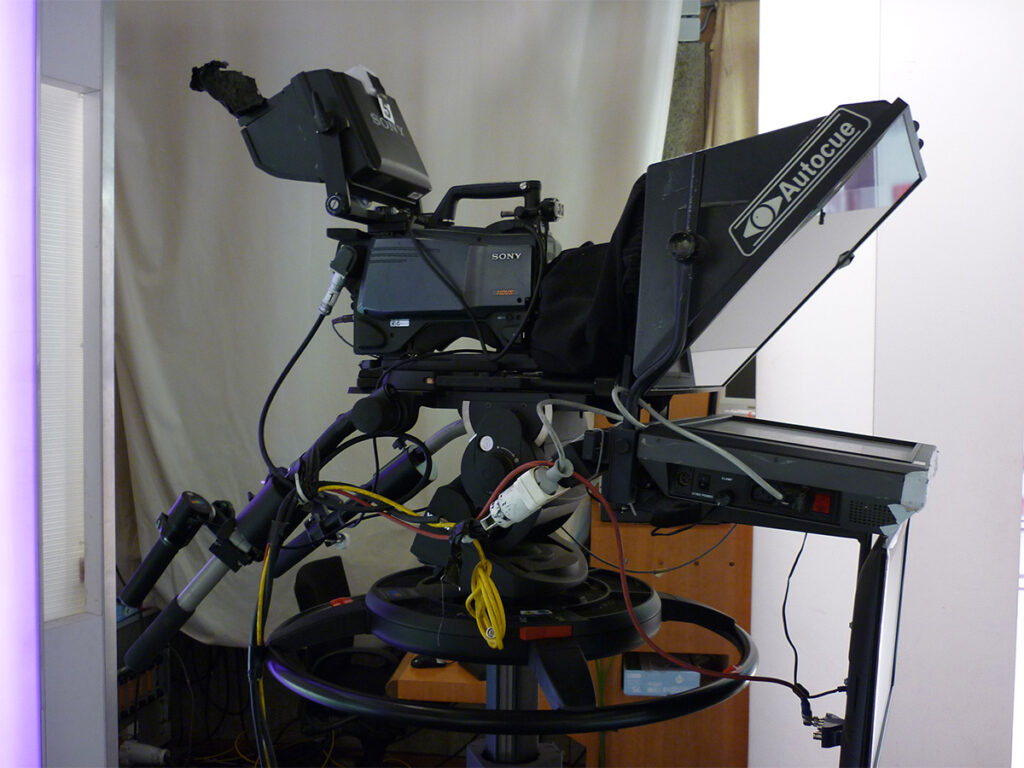
The way the autocue works will mean you will be delivering your lines straight down the barrel of the lens and will allow you to read through your lines as you are being filmed, as they will appear to you as scrolling text. This does not mean you should not learn your lines, as this will always make your delivery more polished.
People tend to have the preconception that the autocue will make any delivery to camera easier and better, but that just is not the case. Don’t get us wrong, it is an amazing bit of kit and works wonderfully in the right situations, but it is not suitable for everything. To find out more on when is and isn’t the right situation for an autocue click the link HERE!
That’s it, thanks for reading!
Hopefully your next interview will not feel daunting now you know what it will entail and the steps you can take beforehand to make it run as smoothly as possible.
If you would like to get in touch, send us an email at info@croft-tv.com, use our contact form here or give us a call on 01628 668735.
We offer no-obligation, free quotes and are always happy to discuss concepts, and if you found this guide useful please share it!
We looking forward to working with you soon!
– The Croft TV Team
What is an Isometric Animation? Impactful Explainer Video Styles
What is an Isometric Animation?
At Croft TV we are always trying to learn new things and stay at the forefront of modern video making techniques. With that in mind, we are excited to announce that we have added a new video style to our repertoire…
Isometric Animations (also known as Isometric Explainer Videos)
If you don’t know what that is, no problem, let us explain…
What is an Isometric Animation?
Isometric Animation is a style commonly used in Explainer Videos and is a 2D, top-down, cubic perspective that mimics a 3D plane. If you haven’t see a video like it, you may still recognise it as it looks very similar to the popular video game The Sims.

What type of videos work best as Isometric Animations?
There are a lot of different types of video that would work well as an Isometric Animation. Though, the most common and for good reason, is an Explainer Video – you may have heard of these as Isometric Explainer Videos.
If you don’t know what an Explainer Video is, we have written an in-depth article explaining what they are and why they are used – you can read the article by clicking HERE!
As a brief summary, an Explainer Video is an engaging, light-hearted and memorable way to (surprise, surprise) ‘explain’ an idea, product, service, etc..
They are especially good at conveying potentially dry information, as the charming style holds attention and keeps eyes on the screen.
A great example of an Isometric Explainer Video and one of our recent pieces of work can be seen below.
Because we are a full-service production company, the above example included everything from
script and storyboard support to bespoke design and animation for elements like the room, environment and characters.
To finish the video off, we also sourced and remotely recorded a US voice over artist (at our clients request), which we then mastered and edited into the video.
Now you know all about Isometric Animations, you might be asking…
“Who can make me a good Isometric Explainer Video?”
Well, you’re in luck!
We have the perfect team to create a completely personalised Isometric Animation for your product, service, business or anything you can think of!
From the conception of the project to its completion, we will work with you every step of the way to create your perfect video for your needs.
If you wanted to have a chat about anything in this article or any other elements of video production, then Croft TV are your ‘go to’ company. We love chatting through ideas for videos and we also will happily provide you with free, no obligation quotes.
If you would like to get in touch, send us an email at info@croft-tv.com, use our contact form here or give us a call on 01628668735 and if you found this information useful then please share it!
– The Croft TV Team
Top 5 Video Marketing Trends for 2022
Top 5 Video Marketing Trends for 2022
At the start of any year, it’s good to look ahead to see what the future of video content could look like. Here’s what we think will be the big players in our industry for 2022.
1. Interactive videos:
It was back in 2018 when Charlie Brooker’s Bandersnatch hit Netflix.
It was ground-breaking. A ‘choose your own adventure’ book on your TV!
These clickable buttons throughout a video are really gathering in popularity and you don’t need a multi-million dollar streaming platform to host your own.
Your website can showcase a video which has fully interactive elements such as links to websites, products, quizzes and menus to name just a few options. All of these can be embedded inside your video player.
Getting engaged with a video creates a new and immersive experience and it’s one that should really help your video stand out from competitors.
2. Self-Shot Content:
One year we won’t have to include this on our list, but while we are still in the grips of this pandemic, self-shot content will be here to stay.
Whether you use a phone, tablet, SLR camera, Teams or Zoom to capture your footage you’ll still want that high-quality end product.
No matter the quality of your recording, it’s still important to make sure the editing and everything surrounding your self-shot content looks fantastic.
Our top tip would be to seek advice on lighting, angles, backgrounds and audio quality before you film yourself.
A lot of things can be fixed in post-production, but the better the source material, the less “fixing” required. We have a free ‘self shooting’ guide which you can view by clicking here or download a PDF version by clicking the link below!
We’re of course happy to edit your footage once it’s filmed.

3. Social Media (style) Content:
Tik-Tok and Instagram Stories will really drive some quick and up-to-the-second marketing opportunities.
Producing a video that replicates the style of a social media platform video is becoming a huge player in video marketing.
Adding overlays, emoji’s and eye-popping animations to a video means you can keep re-using your social style clips on your website or LinkedIn for example.
These videos look great, they are what 2022 viewers are going to be used to seeing and they will hopefully get you trending in all the right ways.

4. Online Events:
We’d love to be able to gather in our thousands at events, but there is understandable hesitancy remaining in 2022 to do this.
That means it’s likely you’ll be keeping your conferences and launches online for now.
This means video is key!
There will be a budget saving by remaining online. The costs saved from hiring venues and travel arrangements could be redirected to making some really eye-popping content.
Attention is easy to earn but hard to keep, so why not sprinkle your online meetings with the best videos you’ve ever produced.

5. Short Videos:
I’ll leave it up to you to decided how short a ‘short video’ is, but it’s always shorter than you think.
With videos making up over 80% of web traffic (source) our stamina for absorbing moving pictures is on the wane.
When it’s so easy to swipe to the next piece of content, your video has got to get right to the point quickly and, of course, look awesome!
If you wanted to have a chat about anything in this blog or any other elements of video production, then Croft TV are your ‘go to’ company. We love chatting through ideas for videos and we also will happily provide you with free, no obligation quotes. We hope to connect with you in 2022.
If you would like to get in touch, send us an email at info@croft-tv.com, use our contact form here or give us a call on 01628668735 and if you found this post useful then please share it!
– The Croft TV Team
Top 5 Corporate Video Trends of 2021
Top 5 Corporate Video Trends of 2021
2020 was unpredictable to say the least! It lead to many sudden and drastic changes to the way that business is conducted. Forcing businesses to adapt and really evaluate what is important, to and for them.
Thankfully for us, video became a crucial tool in helping businesses adjust and thrive in the current global situation.
By utilising existing video technology businesses were able to move their communications online; everything from training, meetings and even large events. This is obviously not a new idea, but 2020 saw this happen on a scale never seen before.
Based on what we saw in 2020 and our experience in the industry, we have compiled a list of the top 5 corporate video trends you are likely to see in 2021.
So let’s jump in!
1. Virtual is still the way to go!
In 2020 we saw a dramatic rise in the use of video software such as Zoom and Microsoft Teams. This will continue to increase through 2021 as physically attending meetings or events continues to be problematic.
There are other reasons why this trend might hang around a lot longer than is necessary; in a lot of cases this is an easier, more cost effective and simply better way of operating.
A great example of this is the rise in webinars, which we have been commissioned to edit a lot of in the last 12 months.
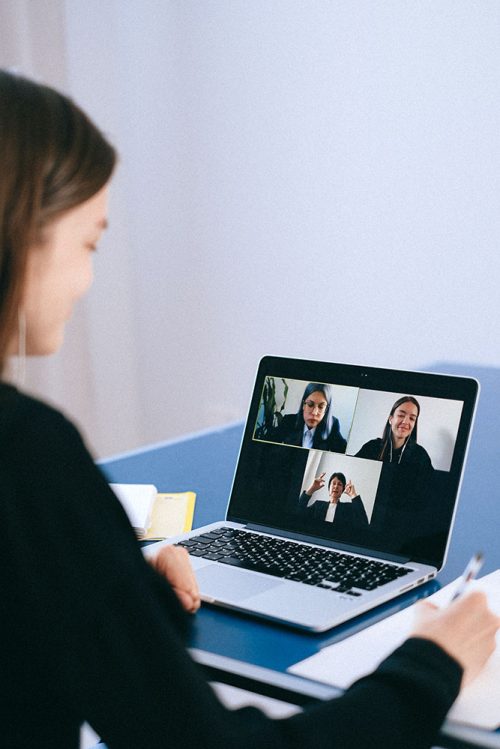
The virtual webinar lets you bring together people from any location for a face-to-face chat, relatively easily and inexpensively.
We recently edited a STEM related webinar where professional engineers from all over the UK spoke about their experience in engineering and took questions from school students. This was an extremely inspiring video and an excellent use of the technology.
The opportunities for these kinds of applications are limitless.
Another additional benefit to the use of video communication software is that it can be easily recorded and turned into instructional or marketing material.
That’s where we come in 🙂
We take the recorded videos, add our magic – which could take the form of professional editing, cleaning up the audio, grading, adding music, slides, captions & graphics, animations and much more – and return you your polished video that you can use anywhere!
2. Remote Directing
Remote directing gained a lot of popularity in 2020 and that popularity does not seem to be slowing down in 2021.
This should come as no surprise as getting a professional team to remotely direct your shoot is still the best way to maximise your video quality when it is impossible to get a professional video team in.
These shoots have worked really well for us, producing some great results!
If you are new to the concept, we have outlined below how a typical production may run.
Typical Remotely Directed Shoot
The key to a remotely directed shoot is the same as a regular shoot; work out the kinks before you film!
Through discussions with the client and presenter, prior to filming, we work out the details, such as: What camera do they have to film on? What microphone will they be using? Where is the best location for them to shoot? Will they be reading from a script? All in an effort to help them look their best!
On the day they can either film it themself or we can call in and be there via video link. Here we will work with them on delivery, eye line and basically help them record a professional looking, high quality video.
3. Making the most of your content
With the statistics for screen time increasing year on year, 2021 is an important time to ensure you are releasing enough content and that it is being seen as much as possible by your targeted audience.

Each platform has its own specific video format but if you plan the video right, you can either make a universal video that can be used across all platforms or differently formatted versions that can be used on each specific platform. Either way it’s not much effort for something that can be extremely advantageous for your business or brand.
Another way to make the most of your content is something we do a lot of at Croft TV, which is localising and translating videos.
We do this by taking your video and depending on your requirements, translate, re-voice, re-caption and/or subtitle it.
This way for a fraction of the cost of a new video you can hit as many markets as you need – win-win!
4. Self-shot material to increase in popularity
No doubt you have seen a lot of self-shot video content these days, just watch 5 minutes of the news and you’ll be bound to see some.
It has grown in popularity for a number of reasons including the fact that it can be more cost effective, it allows you to create video without having to be around people outside of your bubble and people often think less crew means less pressure.
It can however have its draw backs and is no replacement for a professional crew when it’s possible to have one.
On this, we’ve written an entire blog post on the pros and cons of self-shooting vs hiring a professional film crew which you can find HERE!
This point leads us onto our final trend…
5. Quality is less of an issue than it used to be
Since self-shot material has taken off, people have naturally become more forgiving of the quality of the material, so you can stress less!

This is due largely to the fact that a lot of us are now working from home and can relate to issues like a little bit of household, background noise (or the odd attention seeking child or pet making an appearance).
The caveat to this is that it mainly applies to video that looks self-shot such as interviews or piece to cameras and not so much to more promotional styles of video.
Something also worth mentioning is that if the quality is too bad then it will have the opposite effect to what you intended. We have explored this in our article Professional Film Crew vs Self-Shooting: What’s Best For You?
If you are looking to improve your self-shot video and get them looking their best, we’ve created a free, easy to follow guide that will walk you through everything you need to know in getting your videos looking and sounding as good as they can. You can find it by clicking HERE; or download a PDF version by clicking the link below!
That’s it, thanks for reading and good luck for the year ahead!
A little about us, we offer no-obligation, free quotes and are always happy to discuss concepts.
If you would like to get in touch, send us an email at info@croft-tv.com, use our contact form here or give us a call on 01628668735 and if you found this post useful then please share it!
– The Croft TV Team
Professional Film Crew vs Self-Shooting: What’s Best for You?
Professional Film Crew vs Self-Shooting: What's Best for You?
The global pandemic has changed the world in a lot of ways and has been a massive driver for innovation in every industry.
From our perspective, in video production we have seen a big increase in people self-shooting.
This article will discuss the pros and cons of self-shooting and why/when you’d still want to use a professional film crew during the COVID-19 pandemic.
Let’s begin!
No doubt you have seen a lot of self-shot video content these days, the news being the most prevalent source. It has taken off for a number of reasons including the fact that it can be more cost effective, it allows you to create video without having to be around people outside of your bubble and people often think less crew means less pressure.
However, self-shot video is not always suitable for every application; this is often due to its quality.
The quality of self-shot video can suffer for a number of different reasons, from technical issues such as camera quality, framing, exposure, focus, lighting and sound, to more experience and acting related issues such as eye line, clearness, confidence and flow, to name a few.
Sorry for this interruption, but…
If you are looking to improve your self-shot video and get them looking their best, we’ve created a free, easy to follow guide that will walk you through everything you need to know in getting your videos looking and sounding as good as they can. You can find it by clicking HERE; or download a PDF version by clicking the link below!
Now, back to the article…
Because of this, self-shot video might not always show your brand in the best light.
While we can polish your video with professional editing, grading, the addition of music, slides, captions & graphics, animations, and fix certain issues such as cleaning and mastering your audio or cutting around a mistake, there are certain problems that professional editing just cannot resolve.
We do provide a service where we video-call in and direct our clients while they self-shoot their video and this works really well in eradicating these issues. If this is not possible then as a general rule of thumb self-shot videos are better for internal uses and professionally shot video is better for external, i.e. client and/or customer facing media.
We had a prime example of this recently when a client had sent through a self-shot video that looked a lot like this…
…and asked if there was anything we could do to save it as they needed it for an event on the afternoon of the next day.
Unfortunately, there was nothing that could be done, the problems were baked into the footage – the focus was out, it was so over-exposed you couldn’t see the product they were advertising and to make matters worse the audio was so noisy you could barely make out the presenter’s voice.
So, as fixing the video was impossible we went back to the client with an offer. We could professionally film their presenter in front of a green screen, in our studio the next morning for a competitive price and still have the edit to them that afternoon.
They agreed and the resulting video looked a lot more like this…
…the audio and visuals were clear and crisp, the delivery was confident and strong and the overall video was great, the client was extremely happy with the end result.
We had even lit the presenter in such a way that, coupled with the ‘green-screened’ background image of a lounge room, the presenter looked as though they were in that room.
Another benefit of getting your video professionally shot is consistency, this is especially important if you are looking to produce a series of videos. We have over 30 years’ experience and have produced countless programmes so, you can confidentially hand us a video project and know that we will hit your brief every time. This leads us on to the last point…
…a professional film crew will allow you to stress less. We know our clients are busy and we pride ourselves on providing a stress free video-making experience, allowing you to get on with your actual job.
If you are interested in how we are conducting our shoots during the pandemic then please read our ‘Croft TV’s Video Production Protocol During The COVID-19 Pandemic’ and find out how we keep our crew and clients safe.
That’s it, thanks for reading!
You now have all of the information you need to make an informed decision whether you should self-shoot or hire a film crew.
We offer no-obligation, free quotes and are always happy to discuss concepts.
If you would like to get in touch, send us an email at info@croft-tv.com, use our contact form here or give us a call on 01628668735 and if you found this guide useful please share it!
– The Croft TV Team
Croft TV’s Video Production Protocol during the COVID-19 Pandemic
Croft TV's Video Production Protocol during the COVID-19 Pandemic
Now that live filming is possible again the following article will outline how we (Croft Television) will conduct our shoots, ensuring the safety and well-being of our employees and our clients.
Let’s start at the beginning…
Pre-Shoot
Our employees know and can recognise the symptoms of the COVID-19 virus in themselves and others, so if they are presenting any of these symptoms they will not be attending the filming assignment and instead will go into self-isolation for 14 days, as per the government advice.
We own a temperature gun and so, temperatures will be taken of each employee regularly on the lead up to a shoot, and on the morning of the shoot. If these readings show that any employee has a ‘high’ temperature, i.e. 38°C or above, they will not be attending the filming assignment and will go into self-isolation for 14 days.
Other pre-shoot precautions we will take include ensuring any gear that will be taken with us is thoroughly cleaned using antibacterial solution, which could take the form of a wipe or spray and making sure we have enough safety equipment such as masks, gloves and hand sanitiser for all of our crew members.
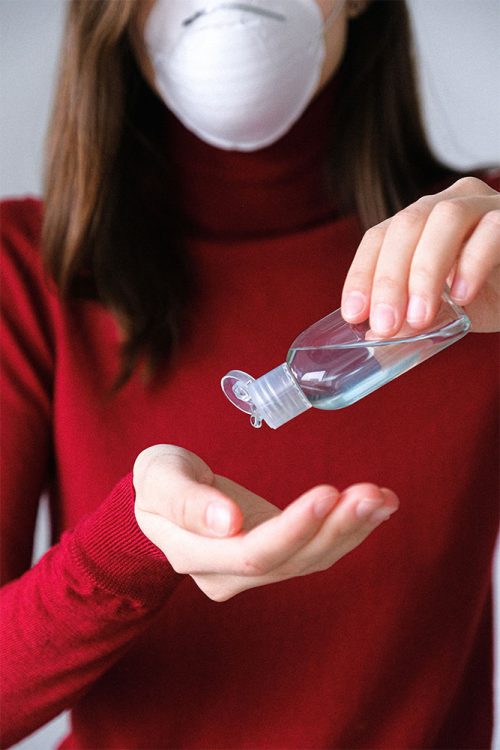
During the Shoot
To minimise the risks of a live environment during COVID-19, masks and gloves will be worn at all times and social distancing rules (keeping a 2 metre distance apart) will be adhered to, also hands will be washed as frequently as possible and equipment will be sanitised regularly.
Other shoot precautions include using a longer lens to allow us to maintain at least a 2 metre distance. We will also instruct our talent on how to apply their own tie mic.
We will keep the details of anyone we come into contact with in line with Track and Trace guidance.
Once the recording is completed we will pack up quickly and neatly, disinfecting our gear as well as any surface we have used/come into contact with.
